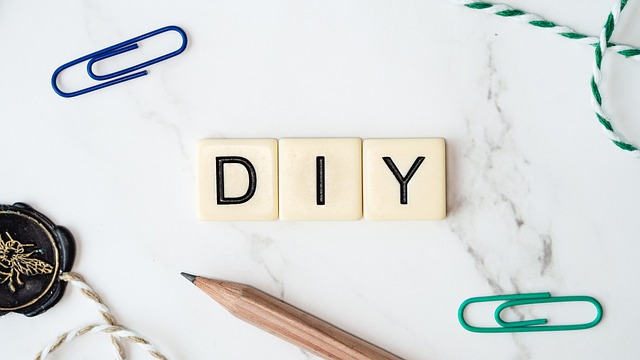Getting ready to start a DIY project around the house? Winter is a great time to refresh some old furniture, put oil in the car, fix your dryer (after all, it’s been making weird sound for at least a few weeks now), and make a new sweater for little Chloe, your Pekingese.
Whether you’re a pro or novice DIYer, there are a few things you should know before you start, especially if you want to do your projects the eco-friendly way. Here are eight ways to make sure your home fixes tread lightly on the planet.
1. Look Online for Ideas
The internet is chock-full of projects for any level of DIYer. Sites like Instructables, eHow, and Make — which is a fun choice if you’re a techie at heart — have hundreds of ideas, blueprints, sketches, photos, and videos to jump-start your projects.

Another benefit of looking online is that you can save money and paper by reducing your need to buy a book or guide. In fact, you can simply read the online instructions on your tablet or phone while you’re working on the task, so you don’t have to print out anything at all. If you are going to buy a how-to book, buy the e-book version to reduce paper waste.
2. Start Around the House
The best place to begin your search for the necessary ingredients for your projects is at home.
Go through those boxes in the back of your closet, open the overflowing “junk drawer,” and take stock of the resources you have at hand. By reusing what you already have, you save resources, money, and even time by avoiding unnecessary trips to the store. Oh look! We found the glue gun!
The beginnings of a million projects are probably lying around the house. Put those unused items to work, make some space, and save money!
3. Borrow From a Friend
If you have a project that requires a unique tool that you won’t use often (will you really use a brick carrier or volt stick again?) or a material of which you need only a small amount, try borrowing from a friend or neighbor.
A network of tool libraries is growing across the country, helping to reduce unnecessary tool purchases. Search for a local tool library at Local Tools and Shareable. In most cases, local residents can check out tools for free, with ID.
Why buy a new tool you won’t use again when you can borrow?
4. Get Thrifty
By now, we all probably know that thrift stores are excellent places to resell items you can no longer use and buy things you need at a good price. Old dresses make comfy couch pillows, plain photo frames are easily bedazzled, and a run-down chair looks great with a new coat of low-VOC paint.
If there isn’t a Goodwill or similar thrift store in your area, consignment shops are also great places to find the pieces you need for your next DIY adventure.
5. Home Repairs
While many consider DIY projects to include only decorative fixes, home repairs fall under this umbrella as well. Fixing an item yourself not only saves you money in parts and labor, but also helps you ensure the full life of your possessions. This is another burgeoning area of local innovation, with repair clubs springing up all over.
The Fix-It Club features information on fixing everything in your home from bicycles and espresso makers to smoke detectors and faucets. It also provides diagrams and other information on how everything works. Before you know it, you’ll be an odd jobs expert.
6. D-I-Y During the D-A-Y
Being aware of your environmental impact doesn’t stop once you’ve gathered all the materials for your project.
Keep your working conditions as environmentally responsible as possible to green your DIY. Try using natural light for free illumination instead of lamps that consume energy. If you need power tools, make sure you unplug them as soon as you’re done, to avoid phantom power drain. Also, if any of your equipment requires batteries, consider rechargeable batteries. That way, you won’t go through a whole box of single-use batteries while you’re blasting AC/DC out in the garage.
7. Recycle Leftovers
No matter the size of the project, you’re bound to have some leftover supplies.
If you have enough to use again, carefully store your materials for the next time you catch the DIY bug. Also, if your friends are inspired to try the same project as you, they’ll probably appreciate a head start on their shopping.
If you can’t reuse your leftovers, try offering your leftovers online through Freecycle, Nextdoor, or your local Habitat Restore. Even the smallest bits of cardboard, metal, wood, and other materials deserve a second chance to become something new. For whatever you can’t reuse or give away, be sure to recycle everything you can.
8. Flaunt It
Once you are done, share your triumphs with family and friends. Give yourself a chance to appreciate the results of your hard work — and maybe inspire your loved ones to attempt their own green DIY projects. Posting photos online with your own hints and tips will also help keep your DIY energy flowing and give you an opportunity to share your eco-friendly projects with a wider audience.
Once you’ve gotten a few projects under your belt, you’ll be surprised at how quickly creativity breeds creativity. Whether you’re building your own solar-powered oven or decoupaging a notebook to hold your next big idea, your earth-friendly options are limitless when you do it yourself.
Trey Granger and Lori Brown contributed to this story. It was updated in February 2021.
The post 8 Ways To Green Your DIY appeared first on Earth911.








